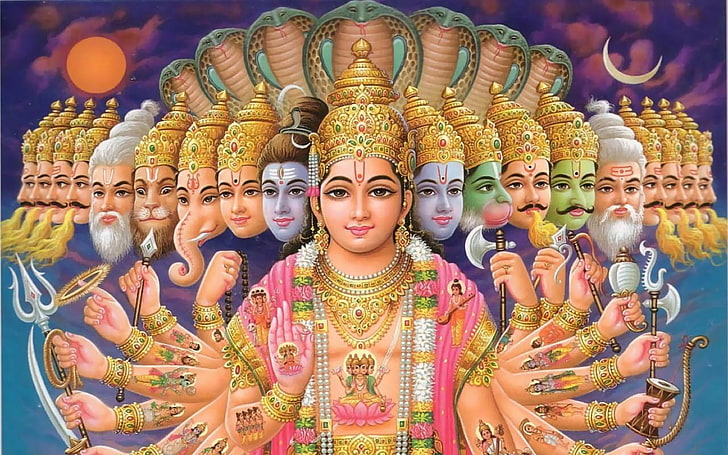The question “What does God look like?” has intrigued people for centuries. Every culture, religion, and individual may have a different answer to this profound question. Some imagine God as a majestic figure, others see Him as a source of light, and some believe He has no physical form at all. In this article, we will explore how different religions and philosophies describe God’s appearance, what the scriptures say, and how people’s beliefs shape their perception of God. Let’s dive into this topic in a very simple and easy-to-understand manner.
Table of Contents
ToggleIntroduction: Understanding the Concept of God’s Appearance
The idea of what God looks like is not straightforward. This is because God is often seen as a spiritual being rather than a physical one. Many people believe that God is beyond human understanding and cannot be limited by a physical form. However, over the years, various religions and cultures have depicted God in different ways. These depictions often reflect the beliefs, values, and cultural practices of the people who created them.
So, does God have a specific form, or is He beyond all forms? Let’s take a closer look at how different religions and cultures visualize God.
How Different Religions Describe God’s Appearance
1. Christianity: God as the Holy Spirit
In Christianity, God is often described as a spirit rather than a being with a physical form. Christians believe in the Trinity—God the Father, God the Son (Jesus Christ), and God the Holy Spirit. While Jesus Christ is seen as God in human form, God the Father and the Holy Spirit are considered to be invisible and beyond physical description.

- The Bible’s Perspective: In the Bible, God’s appearance is described in different ways. In some instances, He appears as a bright light or a cloud. In other cases, He is referred to as a voice from the heavens. For Christians, God’s true nature is spiritual, and He cannot be confined to a physical image.
For more about the Christian concept of God’s appearance, you can visit the Christianity.com article on God’s form.
2. Islam: God Has No Physical Form
In Islam, God (Allah) is believed to be beyond human perception. Muslims do not attempt to depict or visualize God, as it is considered disrespectful and against the teachings of Islam. The Quran emphasizes that there is nothing comparable to Allah, and He is beyond all human understanding and form.

- The Quran’s Teachings: The Quran states that Allah is unique and not like anything else that exists. He is formless, and Muslims believe that trying to give Him a physical shape would limit His infinite power and presence. This belief highlights God’s transcendence and absolute authority.
For more information, visit Quranic teachings on Allah’s nature.
3. Hinduism: God in Many Forms
Hinduism offers a diverse view of God’s appearance. Hindus believe that God can take on many forms and avatars. Deities like Vishnu, Shiva, and Brahma are considered different manifestations of the same supreme power. Each deity has a specific form, attributes, and characteristics that symbolize various aspects of life and the universe.

- Avatars and Incarnations: Hindu scriptures describe God as appearing in human-like forms, animals, or even natural elements like fire or water. For example, Vishnu is said to have taken on different avatars, including Krishna and Rama, to restore cosmic balance.
For more details on the forms of God in Hinduism, check out Hinduism Today’s exploration of God’s forms.
4. Judaism: God as an Abstract Entity
In Judaism, God is often described as a formless, all-powerful being. Like Islam, Judaism teaches that God is beyond human comprehension and cannot be represented by any image or figure. The Torah emphasizes God’s invisibility and supreme nature.

- Biblical Descriptions: In the Torah, God appears to Moses as a burning bush and speaks through a cloud. These are symbolic representations rather than physical depictions, highlighting God’s presence in various forms without having a defined shape.
For more insights, you can visit Chabad’s article on God in Judaism.
5. Buddhism: The Concept of Divine Enlightenment
Buddhism does not focus on a single God or deity with a specific form. Instead, it emphasizes the concept of enlightenment and the inner divine nature present in all beings. Some branches of Buddhism, like Mahayana, have deities such as Buddha or Bodhisattvas, but these are symbolic representations rather than physical depictions of a creator God.

- Symbolic Representations: In Buddhism, figures like Buddha are shown with distinct postures and symbols that convey spiritual truths rather than portraying a literal appearance of a god.
To understand more about Buddhism’s view, visit Buddhist teachings on divinity and form.
Philosophical Views on What God Looks Like
God as a Formless Being
Many philosophers argue that God, if He exists, must be a formless entity. This view suggests that God is an abstract presence, a consciousness that exists everywhere and in everything, rather than a being with physical attributes.
- The Concept of Omnipresence: Philosophers like Spinoza and Leibniz have discussed God as an all-pervading force rather than a being with a body. This aligns with the belief that God is present in every part of the universe and is not limited to one shape or form.
God as a Source of Light
In some philosophical and spiritual traditions, God is often described as pure light. This light symbolizes truth, wisdom, and enlightenment. The idea is that God is not a person or an object but the ultimate source of all knowledge and existence.
For more on philosophical interpretations, check out Stanford Encyclopedia of Philosophy’s entry on God.
Artistic and Cultural Depictions of God
Throughout history, different cultures have created various artistic representations of God. These depictions often reflect the culture’s values, beliefs, and understanding of the divine.
Renaissance Art: God as a Wise Elder
During the Renaissance, artists like Michelangelo painted God as a wise, elderly man with a flowing beard, often reaching out to humanity, as seen in the famous painting The Creation of Adam on the ceiling of the Sistine Chapel. This image has become one of the most iconic representations of God in Western culture.
For more on Renaissance art, visit the Vatican Museums’ official site.
Eastern Art: God as a Symbol of Nature
In many Eastern cultures, God is represented through natural symbols such as the sun, moon, or mountains. For example, in Shintoism (a Japanese religion), the sun goddess Amaterasu is considered a divine entity, and shrines are built in her honor.
Explore more about these representations at Asian Art Museum’s collection.
Why Do People Imagine God Differently?
The way people imagine God often depends on their cultural background, religious teachings, and personal beliefs. Some factors that influence these perceptions include:
- Cultural Background: People tend to imagine God in a way that resonates with their cultural symbols and values.
- Religious Teachings: Different religions have specific teachings about God’s nature and form, which shape believers’ perceptions.
- Personal Experiences: Individuals might have unique experiences that lead them to visualize God in a certain way, such as seeing God as a light, a figure, or even just a comforting presence.
What Do the Scriptures Say About God’s Appearance?
The Bible’s Description of God
The Bible provides various descriptions of God, but they are often symbolic rather than literal. For example, in the Book of Revelation, God is described as having a face that shines like the sun. In the Old Testament, He appears as a burning bush to Moses. These descriptions convey God’s power and majesty rather than a physical appearance.
For more biblical references, visit Bible Gateway.
The Quran’s Teachings on God’s Appearance
The Quran states that God (Allah) is beyond human perception and understanding. He is formless and incomparable to anything. This emphasizes the concept that Allah cannot be visualized or depicted in any shape or figure.
Read more about Allah’s nature on Quran.com.
The Bhagavad Gita’s Vision of God
In the Bhagavad Gita, a Hindu scripture, Lord Krishna reveals His universal form to the warrior Arjuna. This form is described as vast, radiant, and containing the entire universe. It is not a human-like form but a manifestation of divine power and presence.
Explore more on this topic at Sacred Texts’ collection of the Bhagavad Gita.
Do People’s Visualizations of God Matter?
The way people visualize God can have a profound impact on their spiritual and emotional lives. For many, the image of God provides comfort, guidance, and a sense of connection to something greater than themselves. While no one truly knows what God looks like, these visualizations help believers feel closer to the divine.
However, some argue that trying to imagine God can limit the understanding of His true nature. They believe it’s more important to focus on God’s attributes—like love, mercy, and justice—rather than His physical appearance.
Conclusion: Is There a Definite Answer?
The truth is, no one knows what God really looks like. Each religion, culture, and individual has their own unique way of imagining the divine. Whether God is seen as a spirit, a source of light, a wise elder, or an abstract presence, these images are deeply personal and shaped by many factors.
In the end, it may not be about what God looks like, but what He represents to each person. For some, God symbolizes hope, for others, guidance, and for many, an eternal presence that is always there. Understanding these diverse perspectives helps us appreciate the richness of human thought and belief about the divine.
If you’re curious to learn more, you can explore religious texts or visit online resources like BBC Religion for deeper insights into different faiths and their views on God.
Have more questions about what God looks like? Feel free to leave a comment below or check out the links for further reading!
FAQs: What Does God Look Like?
The question of what God looks like has fascinated people for centuries. Different religions, cultures, and philosophies offer a wide variety of answers, and each has its own unique interpretation. To help clarify some of the most common questions about this topic, here are 10 frequently asked questions, along with detailed answers that explore the different perspectives and ideas surrounding the appearance of God.
1. Does God Have a Physical Appearance?
The answer depends largely on one’s religious beliefs or philosophical perspective. Most major religions, like Christianity, Islam, and Judaism, believe that God does not have a physical form because He is considered to be a spiritual being, beyond the limitations of space, time, and physical matter. For example, in the Bible, God is often described using symbolic imagery, such as light or fire, but never as a being with a concrete physical form.
In contrast, some religious traditions like Hinduism depict God in various forms, each symbolizing different attributes of the divine. However, these forms are seen as manifestations of a greater, formless reality rather than a literal depiction of God.
Ultimately, the concept of God’s appearance varies greatly, and many believe that God cannot be fully understood or visualized in human terms.
2. What Does the Bible Say About God’s Appearance?
The Bible provides several descriptions of God, but these are often symbolic rather than literal. In the Old Testament, God appears to Moses in the form of a burning bush, and later as a pillar of cloud by day and a pillar of fire by night to guide the Israelites. These descriptions are meant to convey God’s presence and power rather than His physical features.
In the New Testament, Jesus is referred to as the physical embodiment of God. Christians believe that Jesus Christ represents God in human form, allowing people to understand His love, mercy, and teachings. However, God the Father and the Holy Spirit are considered invisible and beyond physical description.
For a more detailed exploration, you can visit Bible Gateway’s verses on God’s appearance.
3. Why Is God Often Depicted as a Man in Art and Literature?
God is often depicted as a man in Western art and literature because of historical and cultural influences. During the Renaissance period, artists like Michelangelo painted God as a bearded old man, inspired by the image of Zeus, the king of the gods in Greek mythology. This portrayal symbolized wisdom, authority, and power.
However, these depictions are not meant to be taken literally. They were created to help people relate to God’s character and attributes. Many religious leaders emphasize that God is not confined to a human form and should not be limited by human characteristics.
To explore more about how art has shaped perceptions of God, visit the Vatican Museums’ official site.
4. How Does Islam Describe God’s Appearance?
In Islam, God (Allah) is considered formless and incomparable to any creation. The Quran emphasizes that Allah is beyond human perception and cannot be visualized or depicted in any shape or form. Attempting to create an image of Allah is considered blasphemous and goes against Islamic teachings.
Muslims believe that Allah’s attributes, such as His mercy, wisdom, and power, are more important than any physical depiction. The concept of Tawhid (oneness of God) underscores that Allah is unique, indivisible, and unlike anything else in existence.
For more information, read the Quranic verses about Allah’s nature.
5. What Does God Look Like in Hinduism?
In Hinduism, God is depicted in many different forms, each representing various aspects of the divine. Hindu deities like Vishnu, Shiva, and Brahma are considered manifestations of the same supreme power. These gods and goddesses are often depicted in human-like forms but with distinct attributes such as multiple arms, unique symbols, or animal features that convey their divine powers and qualities.
Hindus believe that these forms are symbolic representations of God’s infinite nature, making it easier for devotees to focus their worship and understand the divine. While some Hindus believe in a personal form of God, others view God as a formless, all-pervading presence.
Learn more about Hindu depictions of God at Hinduism Today’s guide to the forms of God.
6. Why Do Different Religions Have Different Images of God?
Different religions have unique images of God because of variations in their teachings, cultural contexts, and historical developments. Each religion seeks to express the concept of God in a way that resonates with its followers. For example:
- Christianity: God is often portrayed as a loving father figure, emphasizing His relationship with humanity.
- Islam: Allah is seen as a formless and incomparable being, highlighting His transcendence.
- Hinduism: God takes on many forms, representing His diverse attributes and powers.
These differences reflect how each religion interprets the divine, and how it seeks to convey complex spiritual concepts through imagery, language, and symbolism.
7. Can We Ever Truly Know What God Looks Like?
Most religious and philosophical teachings suggest that humans can never fully know what God looks like. God is often described as infinite, omnipresent, and beyond human comprehension. Trying to define God in human terms can limit our understanding of His true nature.
Many believe that it’s more meaningful to focus on God’s attributes—such as love, justice, and mercy—rather than His appearance. By understanding God’s qualities, believers feel a deeper connection and appreciation for the divine, even without a clear image of what He looks like.
8. What Do Philosophers Say About God’s Appearance?
Philosophers have long debated the nature of God’s existence and appearance. Many argue that if God exists, He must be a formless, abstract entity rather than a physical being. This view is based on the idea that God is omnipresent and omnipotent, existing beyond space and time.
Philosophers like Baruch Spinoza and Gottfried Wilhelm Leibniz described God as the underlying substance of reality, an essence that cannot be seen or measured but is present in everything. For them, God’s “appearance” is more about the existence of order, reason, and morality in the universe rather than a physical form.
For more on philosophical perspectives, check out the Stanford Encyclopedia of Philosophy’s entry on God.
9. Is It Wrong to Imagine What God Looks Like?
Whether it is right or wrong to imagine what God looks like depends on one’s religious or personal beliefs. Some religions, like Islam and Judaism, discourage any visual representation of God, as they believe it diminishes His greatness and transcends His true nature.
In contrast, other religions like Hinduism encourage imagining and depicting God in various forms to understand His qualities better. In Christianity, God’s appearance has been artistically represented for centuries to help believers visualize and connect with Him.
Ultimately, imagining God’s appearance is a personal decision that varies based on one’s faith, understanding, and relationship with the divine.
10. Why Do Some People See God as Light or an Abstract Force?
Many people describe God as light or an abstract force because these representations suggest purity, truth, and enlightenment. Light is often used as a metaphor for divine wisdom, guidance, and presence. For example, in the Bible, God is described as “the light of the world,” and in the Quran, Allah is referred to as the “Light of the heavens and the earth.”
This symbolism emphasizes that God illuminates the path for humanity and is a source of knowledge and clarity. The abstract representation of God as light or a force allows people to conceptualize His presence without limiting Him to a physical form.For a deeper understanding of these representations, you can visit Religious Studies Online.
